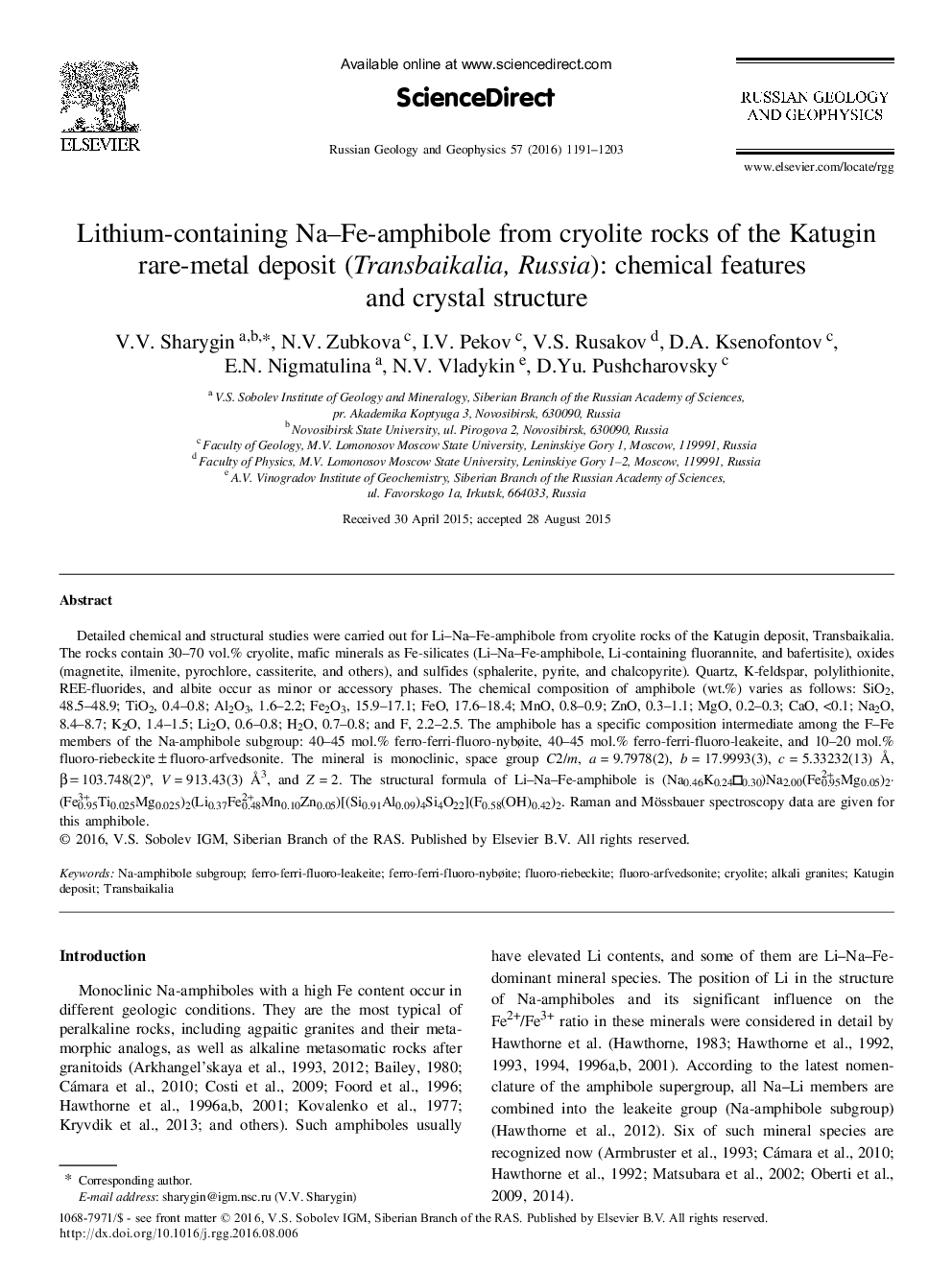| Article ID | Journal | Published Year | Pages | File Type |
|---|---|---|---|---|
| 4737171 | Russian Geology and Geophysics | 2016 | 13 Pages |
Detailed chemical and structural studies were carried out for Li-Na-Fe-amphibole from cryolite rocks of the Katugin deposit, Transbaikalia. The rocks contain 30-70 vol.% cryolite, mafic minerals as Fe-silicates (Li-Na-Fe-amphibole, Li-containing fluorannite, and bafertisite), oxides (magnetite, ilmenite, pyrochlore, cassiterite, and others), and sulfides (sphalerite, pyrite, and chalcopyrite). Quartz, K-feldspar, polylithionite, REE-fluorides, and albite occur as minor or accessory phases. The chemical composition of amphibole (wt.%) varies as follows: SiO2, 48.5-48.9; TiO2, 0.4-0.8; M2O3, 1.6-2.2; Fe2O3, 15.9-17.1; FeO, 17.6-18.4; MnO, 0.8-0.9; ZnO, 0.3-1.1; MgO, 0.2-0.3; CaO, < 0.1; Na2O, 8.4-8.7; K2O, 1.4-1.5; Li2O, 0.6-0.8; H2O, 0.7-0.8; and F, 2.2-2.5. The amphibole has a specific composition intermediate among the F-Fe members of the Na-amphibole subgroup: 40-45 mol.% ferro-ferri-fluoro-nyb0ite, 40-45 mol.% ferro-ferri-fluoro-leakeite, and 10-20 mol.% fluoro-riebeckite ± fluoro-arfvedsonite. The mineral is monoclinic, space group C2/m, a = 9.7978(2), b = 17.9993(3), c = 5.33232(13) A, P = 103.748(2)°, V = 913.43(3) A3, and Z = 2. The structural formula of Li-Na-Fe-amphibole is (Nao.46Ko.24do.3o)Na2.oo(Fea95Mgo.o5)2- (Fe0+ 95Ti0.025Mg0.025)2(Li0.37Fea48Mn0.10Zn0.05)[(Si0.91Al <).09)4Si4O22](F0.58(OH)0.42)2. Raman and Mossbauer spectroscopy data are given for this amphibole.
